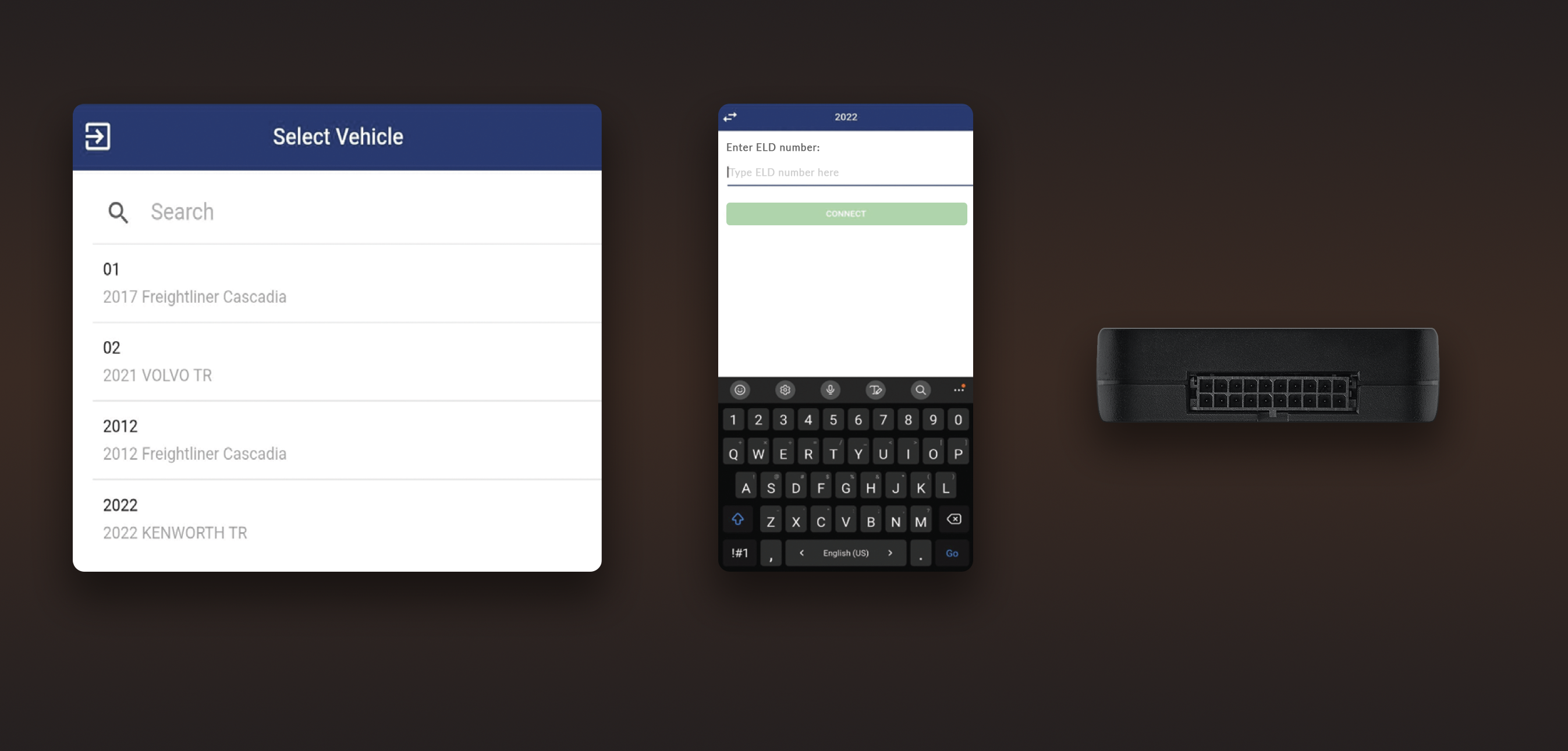Products with ELD "PRS973"
- PHOENIX-ELD Version 2.109.81 and later
- PHOENIX-ELD Version 2.23.15 and later
- PHOENIX-ELD Version 2.13.15 and later
Below you will find a list of products with the ELD "" obtained from our database, including their available manuals, documentation, and images.
Click the corresponding vendor name to obtain additional information on the manufactorer, as well as contact information for further troubleshooting.
PHOENIX ELD

| Vendor | Device Name | Model Number | Approved Version |
|---|---|---|---|
| | PHOENIX ELD | PHOELD | 2.109.81 and later |
Data Transfer and Reporting Procedures
> Telematic (Web Service, Email)Malfunctions and Testing
The telematics data transfer is facilitated by the PHOENIX ELD system, which can be done via email or web services. The driver can transfer logs (via email or web service) by going to the DOT Inspection Mode menu section and clicking "Send" button. In addition, the logs report can be presented to a DOT officer on the driver's mobile device using a separate DOT Inspection Mode button.Certification Statement
As per Appendix A, section 4.6, continuous monitoring is performed by the PHOENIX ELD to ensure compliance and detect malfunctions and diagnostic events. Any inconsistencies identified during self-monitoring are classified as malfunction events, and all events detected or cleared are logged.
PHOENIX ELD

| Vendor | Device Name | Model Number | Approved Version |
|---|---|---|---|
| | PHOENIX ELD | PHOELD | 2.23.15 and later |
Data Transfer and Reporting Procedures
> Telematic (Web Service, Email)Malfunctions and Testing
The telematics data transfer is facilitated by the PHOENIX ELD system, which can be done via email or web services. The driver can transfer logs (via email or web service) by going to the DOT Inspection Mode menu section and clicking "Send" button. In addition, the logs report can be presented to a DOT officer on the driver's mobile device using a separate DOT Inspection Mode button.Certification Statement
As per Appendix A, section 4.6, continuous monitoring is performed by the PHOENIX ELD to ensure compliance and detect malfunctions and diagnostic events. Any inconsistencies identified during self-monitoring are classified as malfunction events, and all events detected or cleared are logged.
PHOENIX ELD

| Vendor | Device Name | Model Number | Approved Version |
|---|---|---|---|
| | PHOENIX ELD | PRS | 2.13.15 and later |
Data Transfer and Reporting Procedures
> Telematic (Web Service, Email)Malfunctions and Testing
PHOENIX ELD uses an electronic data transfer method to deliver driver logs. The driver can send the logs via email or web services to FMCSA from the application. PHOENIX ELD is capable of producing and transferring the ELD records via telematics transfer methods: Wireless Web services and Email. In order to send the ELD records via Web services, a driver must press “DOT Inspection” menu item, then press “Send Logs” button, select Web Service as the Data Transfer Type and press “SEND” button. In order to send the ELD records via Email, a driver must press “DOT Inspection” menu item, then press “Send Logs” button, select Email as the Data Transfer Type and press “SEND” button.Certification Statement
PHOENIX ELD detects malfunctions and data inconsistencies and keeps records of its malfunction and data diagnostic event detection and monitors its compliance with the technical requirements. Following standard coding is implemented for required compliance malfunction and data diagnostic event detection: P - “Power compliance” malfunction, E - “Engine synchronization compliance” malfunction, T - “Timing compliance” malfunction, L - “Positioning compliance” malfunction, R - “Data recording compliance” malfunction, S - “Data transfer compliance” malfunction, O - “Other” ELD detected malfunction, 1 - “Power data diagnostic” event, 2 - “Engine synchronization data diagnostic” event, 3 - “Missing required data elements data diagnostic” event, 4 - “Data transfer data diagnostic” event, 5 - “Unidentified driving records data diagnostic” event, 6 - “Other” ELD identified diagnostic event. The PHOENIX ELD Malfunction and Diagnostic Event Records list all ELD malfunctions that have occurred on PHOENIX ELD during the time period for which this file is generated. Active malfunctions are indicated to all drivers who may use that ELD.